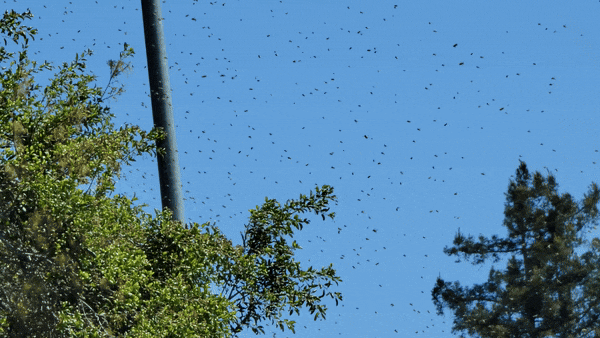Hello folks who wonder if every cockroach is beautiful to its mother,
Every year, around the time of Spring, a tradition takes place. It happens year after year.
No, it's not the total solar eclipse or the northern lights that are visible from Northern California, causing everyone to lose their minds over it. Thankfully, it only happens once every 20 or 40 years. Otherwise, I would never hear the end of it from my colleagues every single day.
I am talking about Cinco De Mayo which is a day that celebrates Mexico's victory over the French in the 1800s. To celebrate this day and show my support for the Mexican community I dine in at my local Taco Bell ordering Chalupa Supreme and Crunchwrap Supreme. For the longest time, I was chided by my friends stating that those foods are not authentic Mexican cuisine, so starting last year I have started ordering Nachos to make my experience even more authentic.
These days TikTok university educated folks are quick to attribute any problems they see to climate change and pesticide use. While it might be true for a lot of cases, it should be judged on a case by case basis.
Case in point was this Western honey bee lying on the ground. Now if you were to ask a TikTok university grad, they might have spewed forth all the colony collapse disorder, neonicotinoids and mites in the colony talking points. Take a look yourself how it is asking me to delete its browser history and whether its decision to buy Tesla and Rivian stocks was a good idea as part of its final words before it passes out.
But if you were not influenced by all the talking points, you would know that this is not a female worker bee at all, but a male Honey bee. You can tell the difference by looking at their eyes - males have larger eyes to locate future honey bee queens in the air and fly towards her during flight. Male honeybee eyes touch at the top of the head, which is not the case with female worker honey bees.
Every spring, when a honey bee colony grows large, the workers create new queen cells. The first queen to emerge becomes the future queen. She will either kill her sister queens or dispatch workers to eliminate them.
The newly departed bee colony that will relocate to a new hive won't find a permanent home right away. Instead, they will spend a day or two clustered together in someone's house, backyard, or on a tree branch. In the month of April, I had the opportunity to witness a bee swarm first-hand.
Even though they are swarming in large numbers, they are not aggressive at all because they don't have a
With time running out, the majority of the colony bides their time on a tree branch. Meanwhile, other worker bees act as scouts, searching for cavities or suitable areas that could become the new home for this hiveless colony. The scouts judge the quality of a potential cavity by hovering close to it, trying to estimate how the colony could expand and settle in that location. Different scouts explore different areas, and they even recruit other scouts to check out a promising location once they find one.
The rest of the colony makes themselves at home temporarily on this oak tree branch.
Some scouts are not so lucky like this worker bee who was caught in a web of a male False Widow spider web. Stuck at the web, all it can do is struggle.
Once the bee's movement is restricted by the spider's web, the spider carefully approaches to find a spot on the bee's body where it can inject its venom.
The venom works its magic quickly, putting this scout bee out of its misery. Rest in peace buddy, you put on a valiant effort trying to find a new home for your colony.












No comments:
Post a Comment
Did you learn something new in this post? Let us know in the comments below